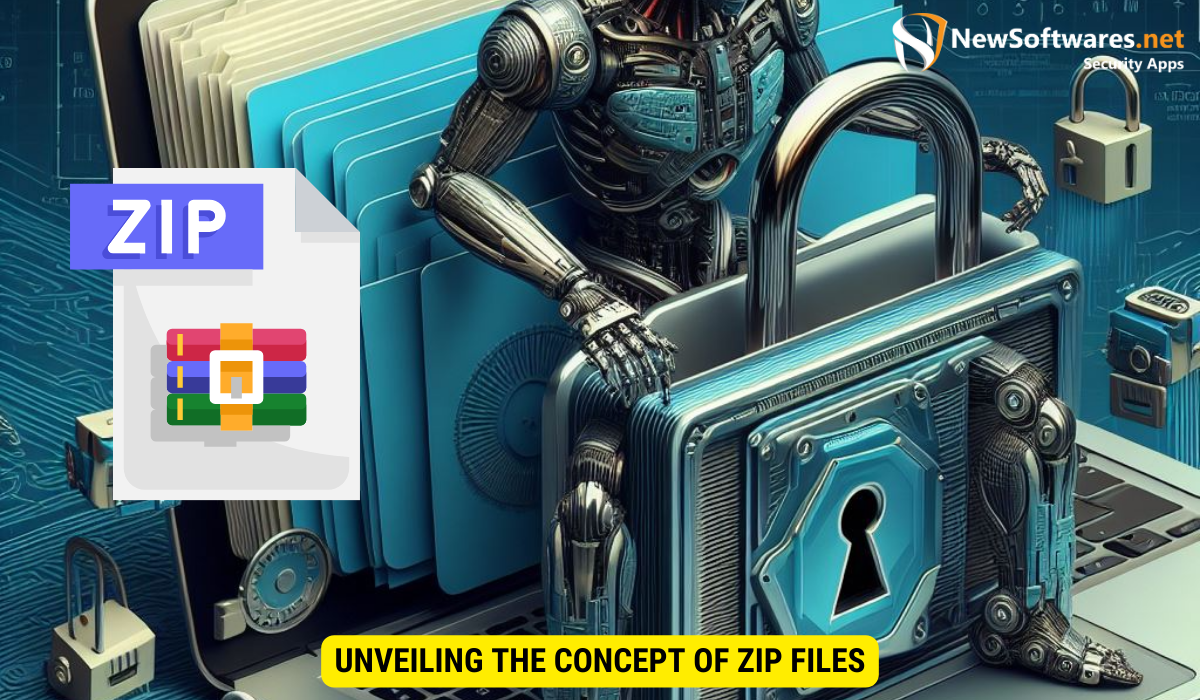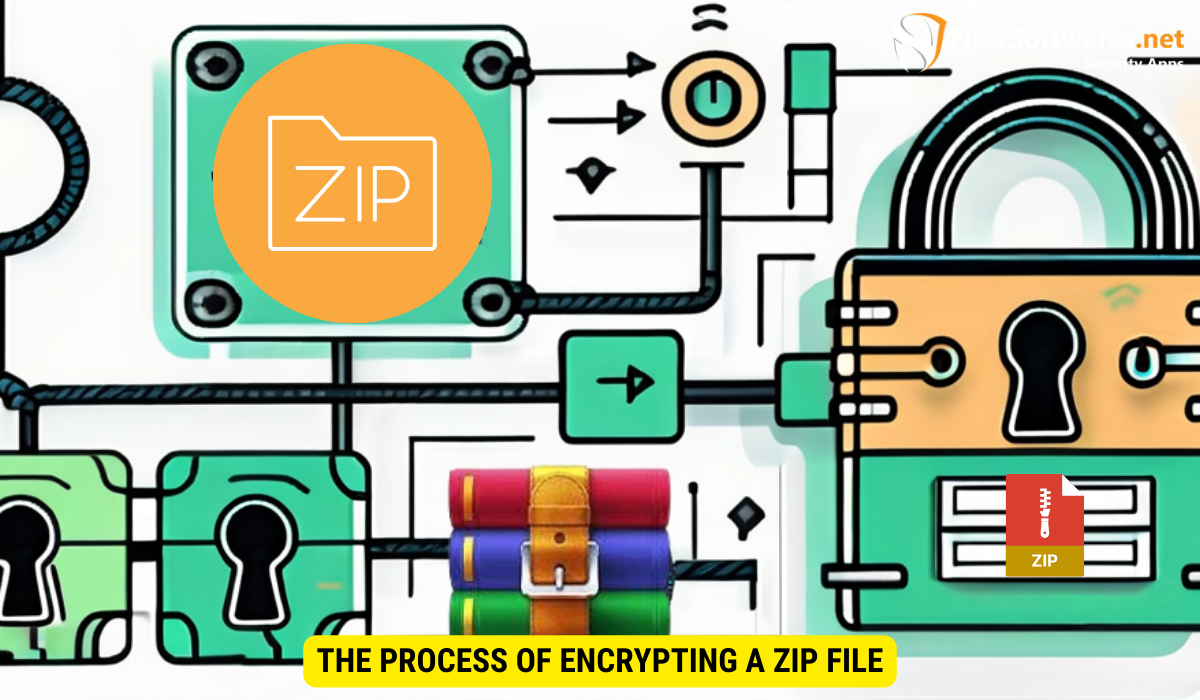Encryption is the process of converting readable information into an unreadable format through the use of algorithms and keys. It plays a crucial role in safeguarding sensitive data and ensuring its confidentiality and integrity. Zip files, on the other hand, are a file format used for compressing and packaging files and folders. By combining encryption and zip files, you can add an extra layer of security to your data and protect it from unauthorized access.
In today’s digital age, data security has become increasingly important. With the growing threat of hackers and cyber attacks, it is crucial to ensure the safety and confidentiality of our sensitive information. One effective way to achieve this is through encryption, especially when it comes to protecting zip files. I will demystify encryption and provide a comprehensive understanding of password protection for zip files.
The Basics of Encryption
Before diving into the world of zip files and encryption, it is essential to grasp the fundamentals of encryption itself. So, what exactly is encryption? Essentially, encryption is the process of encoding information in a way that can only be decoded and understood by authorized parties. It involves the use of algorithms and keys to transform plaintext data into ciphertext, making it unreadable to anyone without the knowledge to decrypt it.
Data security relies heavily on encryption techniques, as it ensures the confidentiality and integrity of sensitive information. By encrypting data, even if it falls into the wrong hands, it remains indecipherable without the appropriate decryption key.
What is Encryption?
Encryption, in simple terms, is a cryptographic process that converts readable information into unreadable format, called ciphertext. It involves the use of a secret key or password to transform the data, making it inaccessible to unauthorized individuals.
Importance of Encryption in Data Security
Encryption plays a pivotal role in data security. By encrypting sensitive information, whether it is personal data, financial records, or corporate files, you add an extra layer of protection against unauthorized access. In the event that data is intercepted or stolen, encrypted files remain unreadable without the decryption key, safeguarding confidential information from falling into the wrong hands.
Data breaches and hacking attempts have become widespread, affecting individuals and organizations alike. Encryption is an effective solution that helps mitigate the risks associated with data breaches and ensures that confidential information remains secure.
Unveiling the Concept of Zip Files

When it comes to compressing and storing multiple files into a single, more manageable package, zip files are commonly used. A zip file acts as a container, allowing multiple files and folders to be combined into one convenient package. It also reduces the file size, making it easier to store and share.
Understanding Zip Files
Zip files are a file format commonly used to compress and package files and folders. They effectively reduce the size of the files, which makes them easier to save and transfer across different devices and platforms. Zip files are created using compression algorithms, such as DEFLATE, which shrink the size of the files while preserving their content.
One of the significant advantages of using zip files is the ability to extract and access individual components within the package without having to decompress the entire file. This allows for convenient and efficient file management and saves valuable storage space.
The Role of Zip Files in Data Storage and Transfer
Zip files have a variety of applications in data storage and transfer. They are commonly used to compress large files or folders, making them easier to store and archive. Zip files also simplify the process of sharing files by combining multiple files into a single package, which can be easily emailed or uploaded to cloud storage.
Moreover, zip files can be password protected, adding an extra layer of security to the compressed data. This is where the intersection of encryption and zip files comes into play.
The Intersection of Encryption and Zip Files
The combination of encryption and zip files provides an effective way to secure and protect sensitive data. By encrypting a zip file, you ensure that the contents are only accessible to those who possess the decryption key.
The Need for Password Protection in Zip Files
Password protection is of utmost importance when dealing with zip files that contain sensitive information. By assigning a password to a zip file, you ensure that only authorized individuals can access its contents. This adds an extra layer of security, preventing unauthorized users from viewing or modifying the files.
It is crucial to choose a strong password, one that is unique, complex, and not easily guessable. Avoid using common words or personal information that can be easily associated with you. Instead, opt for a combination of uppercase and lowercase letters, numbers, and special characters.
How Encryption Works with Zip Files
When you encrypt a zip file, the data inside is transformed using encryption algorithms. The encryption process scrambles the files, making them unreadable without the correct decryption key or password.
There are two main types of encryption commonly used for zip files: symmetric encryption and asymmetric encryption.
Types of Encryption for Zip Files
Encryption plays a critical role in ensuring the security of zip files, and there are two primary methods used: symmetric encryption and asymmetric encryption.
Symmetric Encryption
Symmetric encryption, also known as secret key encryption, involves using a single key for both the encryption and decryption processes. This means that the same key is used to both scramble and unscramble the data within the zip file.
Symmetric encryption is fast and efficient, as the encryption and decryption processes are relatively simple and use the same key. However, a significant drawback is securely sharing the key with the intended recipient without compromising its confidentiality.
Asymmetric Encryption
Asymmetric encryption, also known as public key encryption, employs a pair of keys: a public key and a private key. The public key is used to encrypt the data, while the private key is used to decrypt it.
Asymmetric encryption eliminates the need to share a secret key, as the public key can be freely distributed. The private key, however, must be kept secure and confidential. Asymmetric encryption provides a higher level of security and is commonly used in scenarios where data needs to be securely transmitted and stored.
The Process of Encrypting a Zip File

The process of encrypting a zip file is relatively straightforward, and it ensures that the contents of the file remain secure and protected.
Step-by-Step Guide to Encrypting Zip Files
- Locate the zip file you wish to encrypt on your device.
- Right-click on the file and select “Add to archive” or “Send to” followed by “Compressed (zipped) folder.”
- In the settings or options menu, look for the encryption or password protection feature.
- Specify a strong password that meets the recommended criteria.
- Confirm the password and save the encrypted zip file in your desired location.
Common Mistakes to Avoid When Encrypting Zip Files
- Using weak passwords: Avoid using passwords that are easily guessable or weak. Always opt for strong, complex passwords to enhance security.
- Forgetting the password: Remember to use a password that you can easily recall or store it in a secure location. If the password is lost or forgotten, the encrypted zip file may become inaccessible.
- Not securely sharing the password: When sharing an encrypted zip file, make sure to communicate the password to the intended recipient securely. Avoid sharing passwords through insecure channels or methods.
Key Takeaways
- Encryption is the process of encoding information in a way that can only be decoded by authorized parties.
- Zip files are used to compress and package multiple files into a single convenient package.
- Password protection is crucial when dealing with zip files containing sensitive information.
- Symmetric encryption uses a single key for both encryption and decryption, while asymmetric encryption employs a public and private key pair.
- When encrypting zip files, choose a strong password, securely share it, and avoid common mistakes to ensure the security of your data.
FAQs
Q: Can I encrypt any zip file?
A: Yes, you can encrypt any zip file as long as the compression software you are using supports password protection and encryption features. Check the software documentation or settings to ensure that encryption is supported.
Q: How strong should my password be?
A: It is recommended to use a strong password that consists of a combination of uppercase and lowercase letters, numbers, and special characters. Avoid using common words or personal information that can be easily associated with you. The longer and more complex the password, the stronger the security.
Q: Are encrypted zip files completely secure?
A: While encryption adds a significant layer of security to zip files, it is important to note that no encryption is entirely foolproof. The level of security depends on factors such as the strength of the password and the encryption algorithm used. However, encryption greatly reduces the risk of unauthorized access and helps protect sensitive information.
Q: Can I recover a password-protected zip file if I forget the password?
A: Unfortunately, if you forget the password for a password-protected zip file, there is no way to recover it. The encryption used in zip files is designed to be secure and irreversible. It is important to keep a backup of your passwords or store them securely to avoid being locked out of encrypted zip files.
Q: Can I use encryption on other types of files besides zip files?
A: Yes, encryption can be applied to various types of files and data. Encryption software or methods can be used to protect individual files, folders, or even entire drives. By encrypting sensitive data, you add an extra layer of security and ensure the confidentiality and integrity of the information.
Conclusion
Understanding encryption and password protection for zip files is essential in today’s digital landscape. By encrypting zip files and using strong passwords, you can ensure the security and integrity of your sensitive data. Whether it’s personal information or corporate files, encryption provides the necessary protection against unauthorized access and helps safeguard confidential information from falling into the wrong hands.
